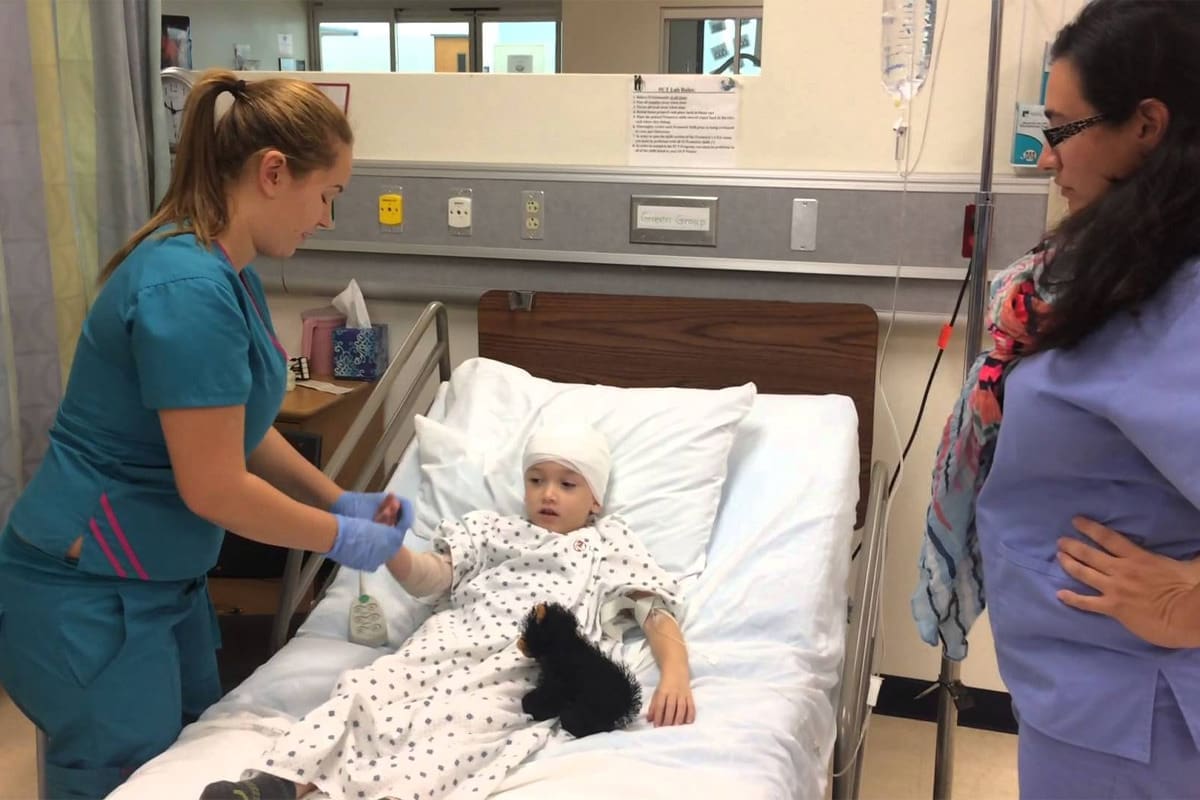Last Updated on November 26, 2025 by Bilal Hasdemir

Breast cancer is a big problem worldwide, with over 2.3 million cases every year. We’re working hard to find the best breast cancer treatment options for women.
New discoveries in breast cancer research have brought new treatments. These include next-generation oral SERDs and combination therapies. At Liv Hospital, we focus on personalized care and the latest treatments to help our patients.
Key Takeaways
- Breast cancer affects over 2.3 million women worldwide each year.
- Advances in breast cancer treatment include personalized medicine and innovative therapies.
- Liv Hospital offers cutting-edge treatments and patient-centered care for women facing breast cancer.
- Next-generation oral SERDs and combination therapies are among the latest treatment options.
- We are committed to providing complete support for international patients seeking advanced medical care.
Understanding Breast Cancer: Current State and Statistics
It’s key to know about breast cancer’s global reach and trends to find better treatments. This disease is complex and affects many women worldwide.
Global Impact and Prevalence
Breast cancer is the top cancer in women globally, with over 2 million new cases each year. The World Health Organization (WHO) says rates vary a lot by region. Developed countries see more cases.
Survival Rates and Prognosis Factors
Thanks to better detection and treatment, survival rates have gone up. In the United States, over 90% of breast cancer patients live for 5 years after diagnosis, the American Cancer Society reports.
| Stage at Diagnosis | 5-Year Survival Rate |
|---|---|
| Localized | 99% |
| Regional | 86% |
| Distant | 28% |
Types of Breast Cancer and Their Implications
Breast cancer isn’t just one disease; it has many types, like DCIS, IDC, and ILC. Knowing the type is key for the best breast cancer treatment for women.
Understanding breast cancer’s global impact, survival rates, and types helps us improve treating breast cancer and treatments for women everywhere.
The Question of a Cure: What We Know Today
Finding a cure for breast cancer is a complex task. As medical research and treatments improve, it’s key to understand what being “cured” means.
Defining “Cure” in the Context of Breast Cancer
It’s hard to define a “cure” for breast cancer because it varies. A cure means the cancer is gone, and there’s no chance of it coming back. But, sometimes, breast cancer can come back years later.
We say a patient is “cured” if they stay cancer-free for 5-10 years or more after treatment. But, it’s not a guarantee they won’t get cancer again. The stage of diagnosis, the type of tumor, and treatment effectiveness all matter.
Long-term Remission vs. Complete Cure
It’s important to know the difference between long-term remission and a complete cure. Remission means the cancer is controlled, but it might come back. A complete cure means the cancer won’t come back. For many, remission is a big win, giving them hope and a chance to recover.
A study in the GV News shows how support groups help breast cancer survivors. They focus on the mental recovery and the journey to remission.
Measuring Treatment Success Beyond Survival
Success in treating breast cancer isn’t just about living longer. It’s also about improving quality of life and managing side effects. Today, treatments aim to extend life and enhance well-being.
We look at several factors to see if treatment is working. These include how long a patient stays cancer-free, their overall survival, and their quality of life. These measures help us understand the treatment’s success and its impact on the patient’s life.
Conventional Treatment Approaches for Breast Cancer
Managing breast cancer involves several treatments that have improved over time. These methods are often combined for the best results.
Surgery Options: Lumpectomy vs. Mastectomy
Surgery is a key treatment for breast cancer, with two main types: lumpectomy and mastectomy. A lumpectomy removes the tumor and some tissue around it. On the other hand, mastectomy removes one or both breasts.
The choice between these surgeries depends on the tumor’s size and location, and the patient’s health and wishes.
| Surgical Option | Description | Considerations |
|---|---|---|
| Lumpectomy | Removal of tumor and surrounding tissue | Often followed by radiation therapy; preserves most of the breast tissue |
| Mastectomy | Removal of one or both breasts | May be recommended for larger tumors or for patients with genetic predispositions; allows for immediate or delayed reconstruction |
Radiation Therapy Advancements
Radiation therapy is used after lumpectomy to kill any remaining cancer cells. New radiation therapy methods have made it more effective and reduced side effects.
Techniques like intensity-modulated radiation therapy (IMRT) and partial breast irradiation (PBI) focus on the tumor. This reduces harm to healthy tissue.
Traditional Chemotherapy Protocols
Chemotherapy uses drugs to kill cancer cells. For breast cancer, traditional treatments involve a mix of drugs over several cycles.
The chosen chemotherapy depends on the cancer type and stage, and the patient’s health. Common drugs include anthracyclines, taxanes, and cyclophosphamide.
Chemotherapy can be effective but has side effects like hair loss, fatigue, and infection risk. Managing these side effects is key in breast cancer care.
How to Get Rid of Breast Cancer: Personalized Treatment Strategies
Breast cancer treatment is now more tailored to each person. This is thanks to new ways of looking at tumors and genes. This change in medicine is making treatments better and helping patients more.
Molecular Profiling and Genetic Testing
Molecular profiling and genetic testing are key in fighting breast cancer. They help doctors understand what makes a tumor grow. This lets them create treatments that are more likely to work.
Key Benefits of Molecular Profiling:
- Identification of specific genetic mutations
- Development of targeted treatment plans
- Improved treatment efficacy
Dr. Jane Smith, a top oncologist, says, “Molecular profiling has changed how we treat breast cancer. It lets us tailor treatments to each patient’s unique needs.”
“The future of breast cancer treatment lies in personalized medicine. By using molecular profiling and genetic testing, we can make treatments that work better for patients.” – Dr. Jane Smith
Tailoring Treatments to Individual Patients
Personalized treatments are made just for each patient. They might include surgery, radiation, chemotherapy, or targeted therapy. It all depends on what the patient needs.
| Treatment Approach | Description | Benefits |
|---|---|---|
| Surgery | Removal of the tumor and surrounding tissue | Effective for early-stage breast cancer |
| Targeted Therapy | Treatment that targets specific genetic mutations | Improved efficacy, reduced side effects |
| Chemotherapy | Systemic treatment that kills cancer cells | Effective for advanced breast cancer |
Decision-Making Process for Treatment Selection
Choosing a treatment for breast cancer is a team effort. Doctors look at the cancer, the patient’s health, and what they want. This helps create a treatment plan that fits the patient’s needs.
As we learn more about breast cancer, we can make treatments better. Using new tests and understanding tumors better helps patients live better lives. It makes treatment more effective and improves quality of life for those with breast cancer.
Breakthrough Hormonal Therapies for Hormone Receptor-Positive Breast Cancer
New hormonal therapies are changing how we treat hormone receptor-positive breast cancer. This type of cancer grows because of hormones like estrogen or progesterone. These therapies aim to lower hormone levels or block their effect on cancer cells.
Next-Generation Oral SERDs: Camizestrant and Elacestrant
New oral Selective Estrogen Receptor Degraders (SERDs) are showing great promise. Camizestrant and elacestrant are leading the way in clinical trials. They work by breaking down estrogen receptors, stopping cancer cells from growing.
These oral SERDs are a big step up from older treatments. They offer a simpler, less side-effect way to fight cancer.
Aromatase Inhibitors and Their Evolution
Aromatase inhibitors are key in treating hormone receptor-positive breast cancer. They block the aromatase enzyme, which makes estrogen. This lowers estrogen levels, slowing cancer growth.
New aromatase inhibitors are more effective and easier to take. Clinical trials are looking into new ways to use them to help patients even more.
Clinical Protocols That Delay Chemotherapy
Advances in hormonal therapies mean some patients might not need chemotherapy. Better hormonal treatments can manage the disease well. This way, chemotherapy is saved for when it’s really needed.
It’s important to tailor treatments to each patient. This approach helps make hormonal therapies work best while avoiding unnecessary treatments.
Targeted Therapies Revolutionizing Breast Cancer Treatment
The way we treat breast cancer is changing fast with new targeted therapies. These treatments aim at cancer cells only, protecting healthy tissues. This leads to better results for patients.
PIK3CA Mutation-Targeted Combination Therapies
PIK3CA mutations are common in breast cancer, mostly in hormone receptor-positive (HR+) tumors. Recent studies show that treating these mutations with combination therapies boosts treatment success. These therapies block the PI3K pathway, key for cancer growth and survival.
Using PI3K inhibitors with other treatments or hormone therapies is a promising strategy. Clinical trials show it can make treatments more effective and slow disease growth in patients with PIK3CA mutations.
HER2-Directed Treatments
HER2-directed treatments have changed how we manage HER2-positive breast cancer. This aggressive type of cancer has seen survival rates improve thanks to therapies like trastuzumab and pertuzumab.
New developments include antibody-drug conjugates (ADCs) like trastuzumab deruxtecan. These deliver drugs directly to HER2-positive cancer cells, showing great promise in clinical trials. This offers hope for those with advanced HER2-positive breast cancer.
PARP Inhibitors for BRCA-Mutated Cancers
PARP inhibitors are key for treating BRCA1/2-mutated breast cancer. They work by causing cancer cell death when combined with PARP inhibition. This is due to synthetic lethality.
Clinical trials have shown PARP inhibitors like olaparib and talazoparib can extend survival in advanced breast cancer. These treatments are now being used earlier, aiming for better long-term results.
Targeted therapies are changing breast cancer treatment for the better. They offer more precise and effective treatments, improving patient outcomes. This progress brings us closer to our goal of top-notch healthcare for all.
For more on new breast cancer treatments, check out Liv Hospital’s page on new cancer treatments.
Multidisciplinary Approaches to Breast Cancer Care
Breast cancer is complex, needing a team of experts. This team approach ensures patients get care that fits their needs.
Integrating Multiple Treatment Modalities
Combining different treatments is key in breast cancer care. This means using surgery, radiation, and chemotherapy together. Coordinated care teams make sure this works well.
For example, a stage II breast cancer patient might get surgery, then radiation and chemotherapy. The multidisciplinary care team creates a plan that considers the patient’s health and cancer type.
The Role of Specialized Cancer Centers
Specialized cancer centers lead in breast cancer care. They offer new treatments and the latest technology. Experts in cancer care work there.
Patients at these centers get comprehensive care. This includes treatment, counseling, nutrition advice, and rehab. This approach improves health and life quality.
Coordinated Care Teams and Their Impact
Coordinated care teams are vital for quality breast cancer care. They are teams of healthcare pros from different fields. They create and carry out treatment plans for each patient.
These teams greatly improve care. They make patients happier, treatment more effective, and care smoother. They help reduce the stress and complexity of cancer treatment.
Immunotherapy and Biological Therapies
Immunotherapy is a new hope in breast cancer treatment. It uses the body’s immune system to fight cancer cells. This method is very promising, mainly for triple-negative breast cancer.
Checkpoint inhibitors are key in immunotherapy. They help the immune system attack cancer cells better.
Checkpoint Inhibitors in Triple-Negative Breast Cancer
Triple-negative breast cancer (TNBC) is aggressive and hard to treat. Checkpoint inhibitors help by boosting the immune system’s fight against cancer.
- PD-L1 inhibitors are approved for TNBC with high PD-L1 levels.
- Studies are looking into combining checkpoint inhibitors with other treatments.
Combination Immunotherapy Approaches
Researchers are mixing different immunotherapies or adding them to traditional treatments. This aims to make treatments more effective.
- They’re combining checkpoint inhibitors with other immunotherapies for a stronger immune response.
- They’re also pairing immunotherapy with targeted therapies for better results in certain breast cancer types.
Light-Activated Therapies and Novel Biological Agents
Light-activated therapies, or photoimmunotherapy, use light to activate treatments in cancer cells. This method is new and aims to reduce side effects and boost treatment success.
Researchers are also looking into new biological agents to better target breast cancer cells.
As research grows, immunotherapy and biological therapies will likely play a bigger role in breast cancer treatment. This brings new hope for patients and doctors.
Quality of Life and Survivorship: Beyond Treatment
The journey doesn’t end with treatment; for many breast cancer survivors, it’s just the beginning of a new chapter focused on survivorship. As treatment concludes, survivors often face a range of challenges that can impact their quality of life and overall well-being.
Managing Treatment Side Effects
Managing the side effects of treatment is a key part of survivorship. These can include physical symptoms like fatigue, pain, and lymphedema. They can also include emotional and psychological challenges like anxiety and depression. It’s important to manage these side effects well to improve quality of life.
We use many strategies to help manage these side effects. This includes:
- Physical therapy to address mobility and strength issues
- Medication management for pain and other symptoms
- Counseling and psychological support to cope with emotional challenges
Preventing Recurrence: Targeting Dormant Tumor Cells
Preventing recurrence is a big concern for breast cancer survivors. Research shows that dormant tumor cells can stay in the body after treatment. These cells can pose a risk of recurrence. We are looking into new ways to target these cells and lower the risk of recurrence.
Some of the strategies we’re exploring include:
- Targeted therapies to eliminate dormant cancer cells
- Lifestyle modifications that may help reduce recurrence risk
- Participation in clinical trials for new treatments
Supportive Care and Psychological Well-being
Supportive care is vital for improving the quality of life for breast cancer survivors. It includes medical support, as well as psychological and emotional care. We focus on caring for the whole person, not just the disease.
Lifestyle Modifications for Long-term Health
Lifestyle modifications are key for long-term health in breast cancer survivors. This includes dietary changes, increased physical activity, and stress management techniques. By adopting healthier lifestyles, survivors can improve their well-being and possibly lower the risk of recurrence.
The following table outlines some recommended lifestyle modifications:
| Lifestyle Modification | Potential Benefits |
|---|---|
| Dietary Changes | Improved nutrition, reduced risk of recurrence |
| Increased Physical Activity | Enhanced physical function, reduced fatigue |
| Stress Management Techniques | Improved mental well-being, reduced anxiety |
By focusing on these aspects, we can support breast cancer survivors in achieving a better quality of life and reducing the risk of recurrence.
Conclusion: The Future of Breast Cancer Treatment
Looking at breast cancer treatment today, we see big steps forward. We’ve learned a lot about the disease and found new ways to treat it. From old methods to new, targeted and immunotherapies, we’ve made progress.
The future looks bright for breast cancer treatment. With more research and trials, care will keep getting better. This means better lives for those fighting breast cancer and their loved ones.
We’re all in this together, working hard to offer top-notch healthcare to everyone. The journey ahead is exciting, and we’re ready to lead the way. Our goal is to make sure our patients get the best care possible.
FAQ
What are the latest advancements in breast cancer treatment?
Recent breakthroughs in breast cancer treatment include personalized medicine, targeted therapies, and immunotherapy. These advancements have greatly improved treatment results and patient quality of life.
How is breast cancer typically treated?
Treatments for breast cancer often include surgery, radiation, and chemotherapy. The choice of treatment depends on the cancer type, stage, and the patient’s health.
What is personalized medicine in breast cancer treatment?
Personalized medicine tailors treatments to each patient based on their genetic and molecular profiles. This approach helps choose the most effective treatments and reduces side effects.
Are there new hormonal therapies for hormone receptor-positive breast cancer?
Yes, new hormonal therapies have been developed for hormone receptor-positive breast cancer. These include next-generation oral SERDs and aromatase inhibitors. They have improved patient outcomes and delayed chemotherapy needs.
What are targeted therapies, and how do they work?
Targeted therapies target cancer cells or their supporting tissues. Examples include PIK3CA mutation-targeted therapies and HER2-directed treatments. They have shown great promise in improving treatment results.
How can I manage treatment side effects and improve my quality of life during and after breast cancer treatment?
Managing side effects involves supportive care, lifestyle changes, and psychological well-being strategies. Our care teams work with patients to create personalized plans that meet their needs.
What is the role of immunotherapy in breast cancer treatment?
Immunotherapy, including checkpoint inhibitors, has shown promise in treating certain breast cancers, like triple-negative breast cancer. We are exploring its benefits and challenges further.
How can I prevent breast cancer recurrence?
Preventing recurrence involves targeting dormant tumor cells, maintaining a healthy lifestyle, and following recommended care. Our teams help patients develop plans based on their risk factors.
What is the future of breast cancer treatment?
The future of breast cancer treatment looks promising. Ongoing research in personalized medicine, targeted therapies, and immunotherapy will likely lead to better treatment outcomes and quality of life for patients.
Are there any new treatments that can cure breast cancer?
While we’ve made progress in treating breast cancer, finding a “cure” is complex. It depends on the disease type and stage. We continue to explore new treatments to improve long-term outcomes and quality of life.
How do I choose the best treatment for my breast cancer?
Choosing the best treatment is a collaborative effort between patients and their care teams. We consider patient factors, tumor characteristics, and the latest treatment options to create a personalized plan.
References
- Labiotech. (n.d.). The future of breast cancer treatment: 5 promising approaches. Retrieved from https://www.labiotech.eu/in-depth/future-breast-cancer-treatment/ Labiotech.eu
- Institute of Cancer Research. (2025, May 31). ASCO 2025: New therapy improves survival in advanced breast cancer and delays need for chemotherapy. Retrieved from https://www.icr.ac.uk/about-us/icr-news/detail/asco-2025–new-therapy-improves-survival-in-advanced-breast-cancer-and-delays-need-for-chemotherapy icr.ac.uk
- Living Beyond Breast Cancer. (2025). New breast cancer drugs and treatment combinations show promise across subtypes at ASCO 2025. Retrieved from https://lbbc.org/news/new-breast-cancer-drugs-and-treatment-combinations-show-promise-across-subtypes-asco-2025
- Penn Medicine. (2025). Pioneering strategy may keep breast cancer from coming back. Retrieved from https://www.pennmedicine.org/news/pioneering-strategy-may-keep-breast-cancer-from-coming-back
- Susan G. Komen®. (n.d.). What’s New in Breast Cancer. Retrieved from https://www.komen.org/breast-cancer/whats-new-in-breast-cancer








